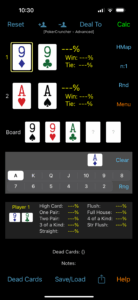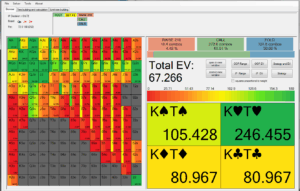Poker was AI’s first sun run [1]
In THE GARBAGE MAN, our MC Kayla dreams of playing poker professionally. She doesn’t want to work for anyone. She doesn’t want to sit in an office. She doesn’t want to trudge each day into a soulless gleaming high-rise in Midtown Manhattan, like so many of her Harvard Business School classmates. She wants to run her own little P&L [2] on the casino felt, as a professional poker player.

Poker pro Kelly Minkin, living my MC’s dream
As you might guess, I didn’t just PFA (Pull From the Air/Ass) this character trait. No, nope, nyet. Poker is a game that I have played and loved for years.
And boy has it changed.
Back when I first learned to play, on or around 2010, there was just the player, her brains, her guts, her bankroll, and the felt. We had little odds calculator apps on our iPhone 4s and that was about it.
Bots had infiltrated online poker (posing as human players), but for the most part they sucked. Poker fell into the category of games that seemed technically impossible for an artificial intelligence to dominate. Because of the existence of bluffing and the fact that the large majority of hands contain imperfect information (such as cards folded unseen), computers had never really solved poker, the way they had a game such as chess.

If you read TGM, you’ll recognize this hand in vintage odds calculator Poker Cruncher
Until that is, the advent of, uh, solvers.
Computers got smaller, faster. Computational power got cheaper. Enter GTO (Game Theory Optimal) Solvers that could now crunch the incredibly complicated decision trees that comprise poker. These products are like a super calculator for poker. Players set up a hand scenario and find the optimal solution. You ask the solver a question and it gives you the answer.
SOUND FAMILIAR, CHATGPT??

This is PioSolver, one of the most popular GTO Solvers
The question can be as simple or mind-numbingly complex as you want [3], and there are still many limitations (all beyond the scope of this article). But here’s why I think it’s relevant:
What solvers did to poker is what AI is going to do to many industries and professionals. Yes, I know that GTO solvers are not really AI, but really, they sort of…are.
Because they have the same end result.
Solvers raised the quality of the “baseline player”. Made poker a homework sport instead of a soul-calling for desperadoes. Anyone with a phone could (and should) deep dive into bet lines, sizing strategies and more, analyses once only the province of sophisticated players. The technology created an irreversible shift to a more professionalized, standardized game. If you weren’t studying, you bled. And even if you were, your win rate probably dropped anyway because everyone else studied too.
Edges compressed. Shrank away.
And I think this will be true of many pursuits and industries: the easy money will dry up, the average “client” will be a lot smarter and more demanding, metrics like billing rates will drop, the winners will level up, and that will be that. Same game, but fiercer. In the immortal words of two characters on the best show ever, The Wire:
Dennis ‘Cutty’ Wise:
The game done changed.
Slim Charles:
Game’s the same, just got more fierce.
Until the bots fully take over, of course!
[1] “Sun Run” – a long string of very good luck
[2] Profit and Loss statement — One of the three essential financial statements of a business along with a Balance Sheet and a Cash Flow Statement.
[3] Here is an example of the type of question you can input in a solver: “How often and what size/s should I c-bet on a 9♦10♣J♥ flop, after raising from middle position and being called by the SB in a NL 5/10 cash game with 100 BB stacks?” See what I mean about “decision trees”?